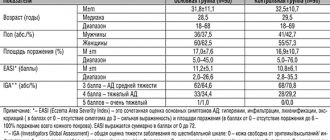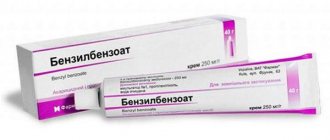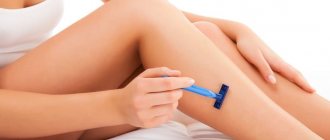Lipophilic yeast-like fungi of the genus Malassezia
are representatives of the normal microflora of human skin.
At the same time, they can cause the development of lichen versicolor, Malassezia-folliculitis in persons predisposed to these diseases, as well as with the development of immunodeficiency states and severe endocrine diseases. The leading role of Malassezia
spp. has been confirmed. in the development of seborrheic dermatitis, the influence on the characteristics of the course of atopic dermatitis and seborrheic psoriasis has been proven [1-6].
In recent years, the genus Malassezia has expanded. It includes 11 species: M. globosa, M. sympodialis, M. furfur, M. obtusa, M. dermatis, M. restricta, M. slooffiae, M. pachydermatis, M. japonica, M. yamatoonsin
[1—7].
The causative agents of pityriasis versicolor can be M. globosa, M. sympodialis
, which, according to Russian and foreign authors, are more often isolated from patients in European countries, as well as
M. furfur, M. obtusa
, which more often cause the development of pityriasis versicolor in people living in hot and humid climates (Thailand, Malaysia, Iran etc.) [1—6, 8].
Over the past 10 years, the pharmaceutical market has offered a wide selection of antimycotic agents for external use. More than 200 different drugs have already been developed. The most promising of them are drugs that have fungistatic and fungicidal effects simultaneously [1-3, 7-9]. terbinafine (Termikon) meets these requirements.
, belonging to the class of allylamines.
In therapeutic concentrations, it has a fungicidal effect against dermatophytes, molds and some dimorphic fungi. The activity of terbinafine (Termikon)
against yeast-like fungi, depending on their type, can be fungicidal and fungistatic.
Purpose of the study: to evaluate the effectiveness and safety of using Thermikon spray
(
terbinafine
) in the treatment of patients with pityriasis versicolor.
Material and methods
termikon spray (terbinafine) was assessed on the basis of the Yekaterinburg Regional Clinical Clinical Hospital.
in 30 patients aged 8 to 43 years. The majority of patients were in the age groups from 20 to 30 years - 13 (43.24%) people and from 30 to 40 years - 8 (26.66%) people, over 40 years - 2 (6.66%), the rest 23, 3% were under 20 years of age. There were 56.66% men, 45.44% women.
The duration of the disease ranged from 1.5 months to 7 years, with an average of 3.45 years. In 46.66% of patients, this disease recurred.
Most patients had limited forms of pityriasis versicolor, represented by single, multiple or merging light brown and/or flesh-colored spots with pronounced pityriasis-like peeling on the surface. In a number of cases, large lesions with scalloped edges formed (Fig. 1).
Figure 1. Large hypo- and depigmented spots on the skin of the trunk and limbs with scalloped edges. In 3 patients, the process was widespread and occupied almost 40% of the skin (Fig. 2).
Figure 2. Generalized mycotic skin lesions (almost 40% of the skin). An 8-year-old boy had an unusual localization of pityriasis versicolor - in the form of isolated rashes in the forehead.
Mild and moderate itching was noted by 60.00% of those examined.
Among the concomitant diseases, vegetative-vascular disorders accompanied by hyperhidrosis were noted in 8 (26.66%) patients, hypothyroidism - in 2 (6.66%), obesity of III-IV severity - in 5 (16.66%), discoid lupus erythematosus - in one (3.33%), HIV infection - in 2 (6.66%), diseases of the gastrointestinal tract (including chronic colitis, duodenal ulcer, chronic gastritis, chronic cholecystitis) - in 18 (60 %).
43.33% of patients had previously used external antimycotic drugs (clotrimazole, ecodax, etc.) independently or on the recommendation of a doctor. No patient received treatment with systemic antimycotics for pityriasis versicolor.
Before treatment, all patients underwent direct microscopy of skin flakes from lesions after KOH treatment, using the Balser test.
The effectiveness of therapy was assessed on the 7th and 14th days of treatment. The criteria for clinical cure were the absence of hyperpigmented spots and peeling; negative results of microscopic examination; negative iodine test. The presence of depigmented spots (secondary leucoderma) was not taken into account.
Results and discussion
After laboratory confirmation of the diagnosis, patients were prescribed the drug Termicon spray
, which was applied to the skin 2 times a day for 14 days.
As a result of treatment, on the 7th day, in 14 (46.6%) patients, the clinical manifestations of the disease regressed and were visualized only by iodine staining. Microscopic examination revealed negative laboratory tests in 16 (53.3%) patients.
After treatment (on the 14th day) in the group of patients, clinical and mycological recovery was noted in 29 (96.66%), the Balser test was negative in 90.14%.
When using Thermikon spray
None of the patients developed any adverse events or allergic reactions. All patients noted the ease of use and high effectiveness of the drug, especially its good absorption and lack of greasy shine on the skin.
We illustrate this study with the following clinical example.
Patient A., 25 years old, has been undergoing follow-up and treatment at the Regional Clinical Hospital for 4 years with a diagnosis of severe discoid lupus erythematosus. Throughout the entire period, he receives the drug diprospan 1.0 intramuscularly once every 14-20 days, and concomitant therapy. During treatment, the patient repeatedly developed various fungal diseases (oropharyngeal, urogenital candidiasis, rubromycosis of the feet).
Pityriasis versicolor developed for the first time in March 2008, the duration of the disease before the start of treatment (Fig. 3, a)
Figure 3. Pityriasis versicolor in a patient with DLE.
a — duration of the disease before the start of treatment, 1.5 months; b - on the 14th day of treatment with Thermikon spray. was 1.5 months. Microscopy revealed fungi of the genus Malassezia, the Balser test was positive. The patient was prescribed Thermikon spray (terbinafine)
2 times a day for a course of 14 days. After 7 days, weakly pigmented lesions and slight peeling remained on the skin; microscopic examination is negative, Balser's test is positive.
On the 14th day of treatment (Fig. 3, b) the rash completely regressed; microscopic examination, Balser test are negative. Upon further observation for 6 months, no relapse of the disease occurred in this patient.
Based on the data presented, we can conclude that Thermikon spray (terbinafine)
has a pronounced antifungal, anti-inflammatory and antipruritic effect, easy to use. It can be used in the treatment of pityriasis versicolor as monotherapy or in combination with systemic antimycotics.
Fungoterbin, 1 piece, 30 ml, 1%, spray for external use
Fungoterbin®
Pills
Inside,
after meal.
The duration of treatment and dosage regimen are determined individually and depend on the location of the process and the severity of the disease.
Adults - usually 1 tablet. (250 mg) 1 time per day. Patients with liver and kidney failure - 1/2 table. (125 mg) 1 time per day.
Mycoses of the skin:
Recommended duration of treatment: tinea pedis (interdigital, plantar or sock-type) - 2-6 weeks; dermatomycosis of the trunk, limbs - 2–4 weeks; candidiasis of the skin and mucous membranes - 2–4 weeks. Complete disappearance of the clinical manifestations of the disease is usually observed several weeks after mycological cure.
Mycoses of the scalp:
Recommended duration of treatment: mycosis of the scalp - about 4 weeks. Mycoses of the scalp are observed mainly in children.
Onychomycosis:
The duration of treatment with the drug in most patients is 6–12 weeks. For onychomycosis of the fingers, in most cases it is 6 weeks, and for onychomycosis of the toes - 12 weeks. Some patients who have a reduced rate of nail growth may require longer treatment. The optimal clinical effect is observed several months after mycological cure and cessation of therapy. This is determined by the period of time required for a healthy nail to grow back.
The drug is prescribed to children from 2 years of age. The dose depends on the child’s body weight: children weighing up to 20 kg - 62.5 mg/day (1/4 table); from 20 to 40 kg - 125 mg/day (1/2 table); more than 40 kg - 250 mg/day (1 table). There are no data on the use of the drug in children under 2 years of age (weight <12 kg).
Cream
Externally.
Before use, it is necessary to clean and dry the affected areas. Fungoterbin® is applied 1 or 2 times a day to the affected skin and adjacent areas. Apply the cream in a thin layer and rub in lightly. When applied to the area of skin folds (groin area, intergluteal area, under the mammary glands), it is recommended to apply a gauze bandage/bandage.
Dermatomycosis of the trunk, large folds, legs:
1 time per day, duration of treatment - 1 week.
Ringworm of the feet:
1 time per day, duration of treatment - 1 week.
Skin candidiasis:
1-2 times a day, duration of treatment - 1-2 weeks;
Tinea versicolor:
1-2 times a day, duration of treatment - 1 week.
Spray
Externally.
The drug is applied to the skin 1 or 2 times a day. Before applying the spray, it is necessary to clean and dry the affected areas. The drug is sprayed onto the affected areas in an amount sufficient to thoroughly moisturize them, and, in addition, applied to adjacent areas of both affected and intact skin.
Average duration and frequency of use
Dermatomycosis of the trunk, legs:
1 week 1 time per day.
Ringworm of the feet:
1 week 1 time per day.
Skin candidiasis:
1–2 weeks 1 or 2 times a day.
Tinea versicolor:
1 week 1 or 2 times a day.
Experience with the use of Fungoterbin® spray in children is limited, and therefore its use in children under 12 years of age is not recommended.
Fungoterbin® Neo
Cream
Externally.
The drug is applied to the skin 1 or 2 times a day. Before applying the cream, it is necessary to clean and dry the affected areas. The cream is applied in a thin layer to the affected skin and lightly rubbed. To increase the effectiveness of treatment, it is possible to use occlusive dressings. For infections accompanied by diaper rash (under the mammary glands, in the spaces between the fingers, between the buttocks, in the groin area), the places where the cream is applied can be covered with gauze, especially at night.
The duration of treatment depends on the indication and severity of the disease.
Duration and frequency of use
Dermatomycosis of the trunk, legs:
1 time per day 1 week.
Ringworm of the feet:
1 time per day 1 week.
Skin candidiasis:
1 or 2 times a day for 1–2 weeks.
Tinea versicolor:
1 or 2 times a day for 2 weeks.
Gel
Externally.
The drug is applied to the skin 1 or 2 times a day. The gel is applied in a thin layer to the affected skin and lightly rubbed. To increase the effectiveness of treatment, it is possible to use occlusive dressings. For infections accompanied by diaper rash (under the mammary glands, in the spaces between the fingers, between the buttocks, in the groin area), the places where the gel is applied can be covered with gauze, especially at night.
Average duration and frequency of use
Dermatomycosis of the trunk, legs:
1 week 1 time per day.
Ringworm of the feet:
1 week 1 time per day.
Skin candidiasis:
1–2 weeks 1 or 2 times a day.
Tinea versicolor:
1 week 1 or 2 times a day.
Pityriasis alba
Skin pigmentation is one of the most variable phenotypes in humans. There are hypopigmentation and hyperpigmentation, the causes of which can be both genetic and acquired factors.
Lichen alba (pityriasis alba, pityriasis alba) is considered an eczematous dermatitis of mild severity and a minor sign of atopic dermatitis, which is characterized by patchy hypopigmentation. The term comes from the words pityriasis (scaly) and alba (white). The word "pythyriasis" was used by the physician Hippocrates in ancient Greece to describe sloppy skin that looked as if it were covered with fine grain bran called "pythyron". Alba (Latin for “white”) means the pallor of the spots that appear.
Description. Asymptomatic, hypopigmented, slightly raised, small scaly patches with ill-defined borders, typically located on the lateral surface of the cheeks. Lichen alba affects the lateral surface of the cheeks, the lateral surface of the shoulders and thighs. It is observed more often in children aged 6–16 years; among adults, it is observed in people who work outdoors.
The etiology and pathogenesis of pityriasis alba are not clear. Some sources indicate prolonged exposure to sunlight, frequent showering and warm baths.
Lichen alba is asymptomatic. When interviewing the patient, there is no indication of previous rash, trauma, or inflammation. Patients are often atopic.
Clinically, the disease is represented by white spots of round or oval shape of various sizes, about 2–4 cm in diameter. On the surface of the spots, fine superficial peeling can be discerned.
Differential diagnosis is carried out between eczematous dermatitis, pityriasis versicolor, vitiligo, chemical leukoderma, hypopigmentation after resolution of psoriasis plaques, tuberous sclerosis. For differential diagnosis with depigmented nevus, videodermatoscopy can be used.
In laboratory diagnostics, examination of thin scales with potassium hydroxide for the presence of fungi gives a negative result.
Treatment. It is usually recommended not to undergo any treatment as the disease is benign and may resolve on its own. You should avoid washing your face with soap; it is advisable to cleanse the skin with hydrophilic oils or a non-greasy emulsion ointment. Applying 1% hydrocortisone cream/ointment or 2% sulfur-salicylic ointment to the affected skin for several weeks may help those patients who are very bothered by uneven pigmentation.
If rashes appear, contact specialists from St. Petersburg State Budgetary Healthcare Institution KVD No. 4.
Makarov M. S.






